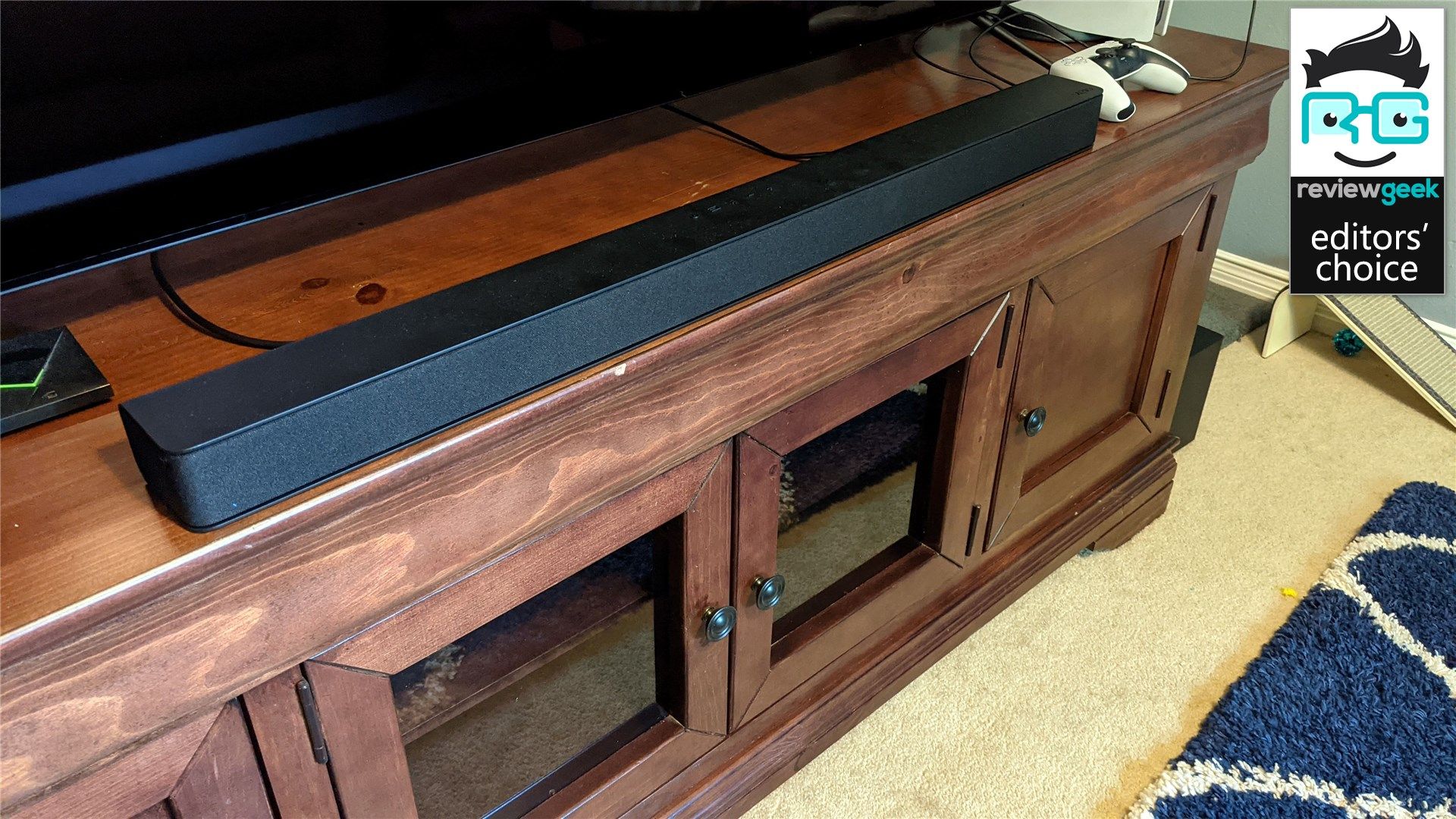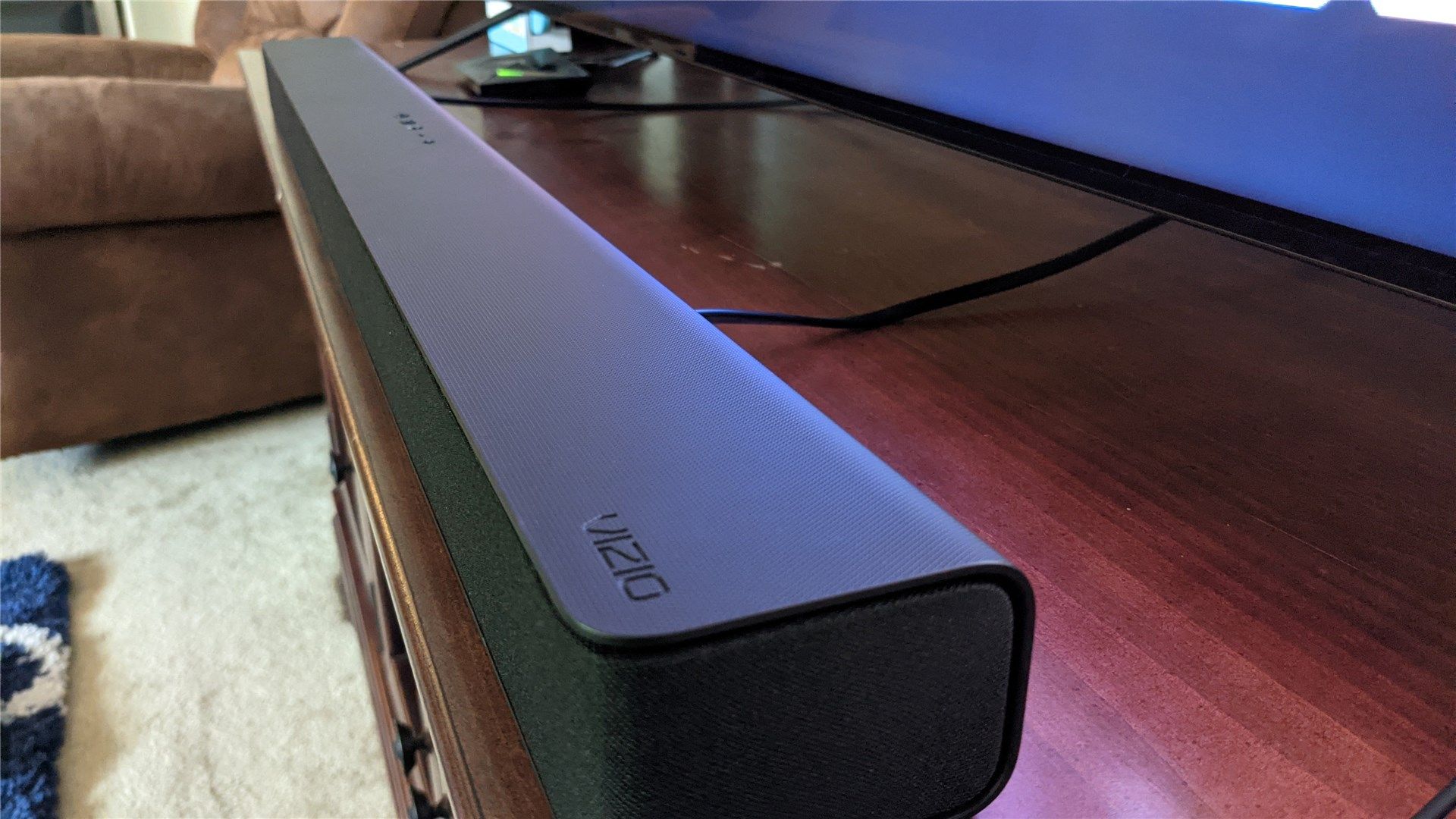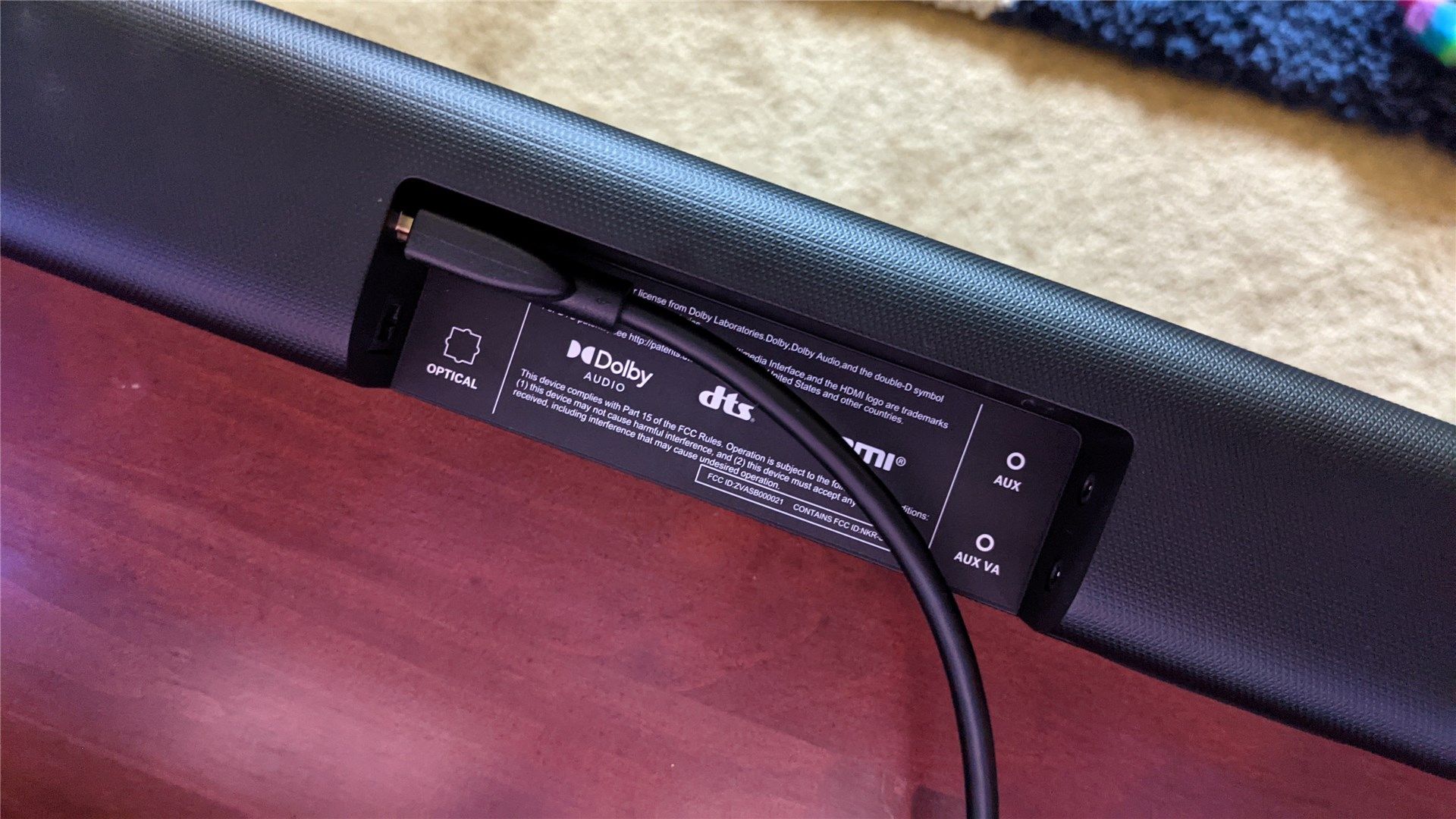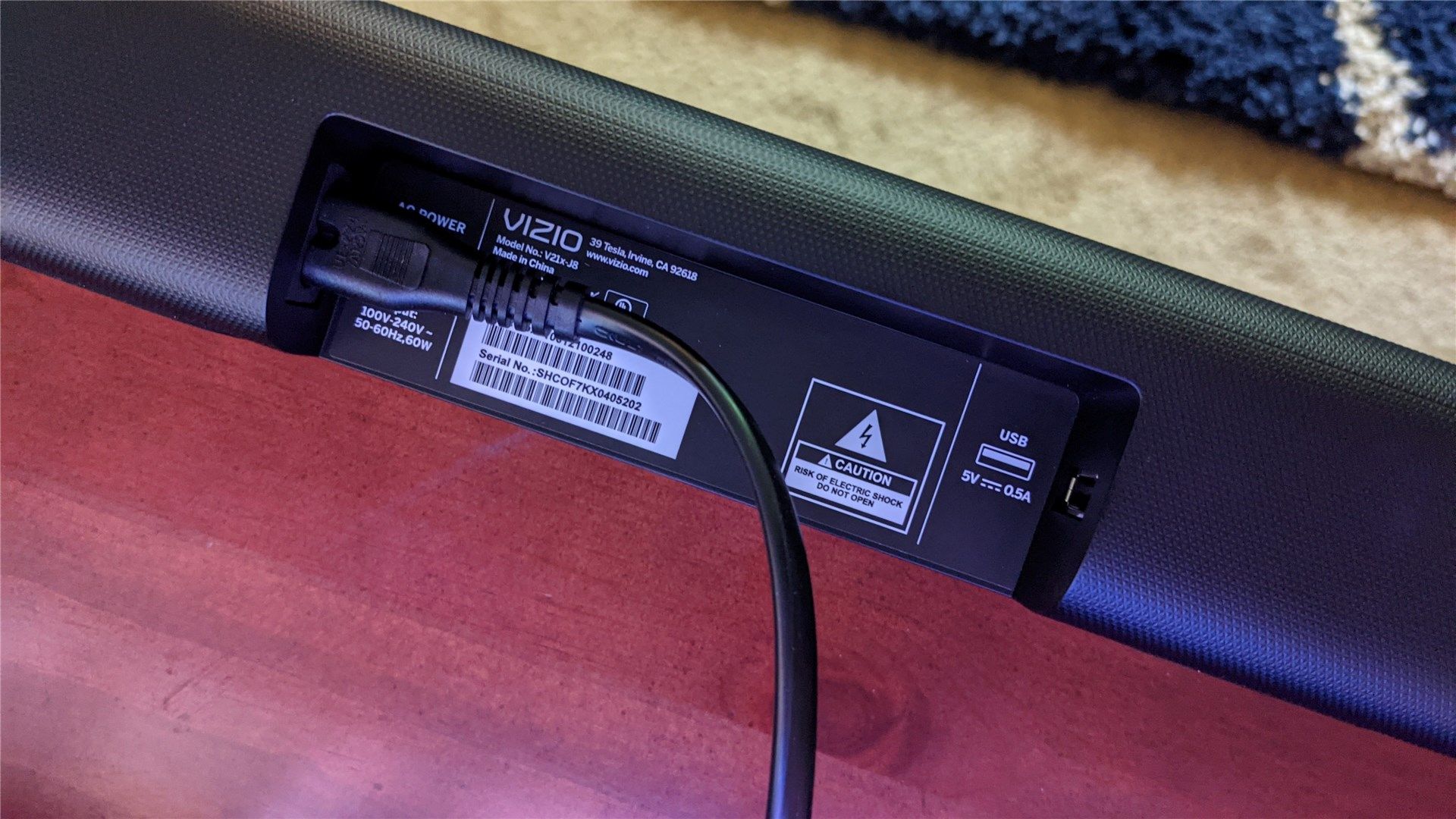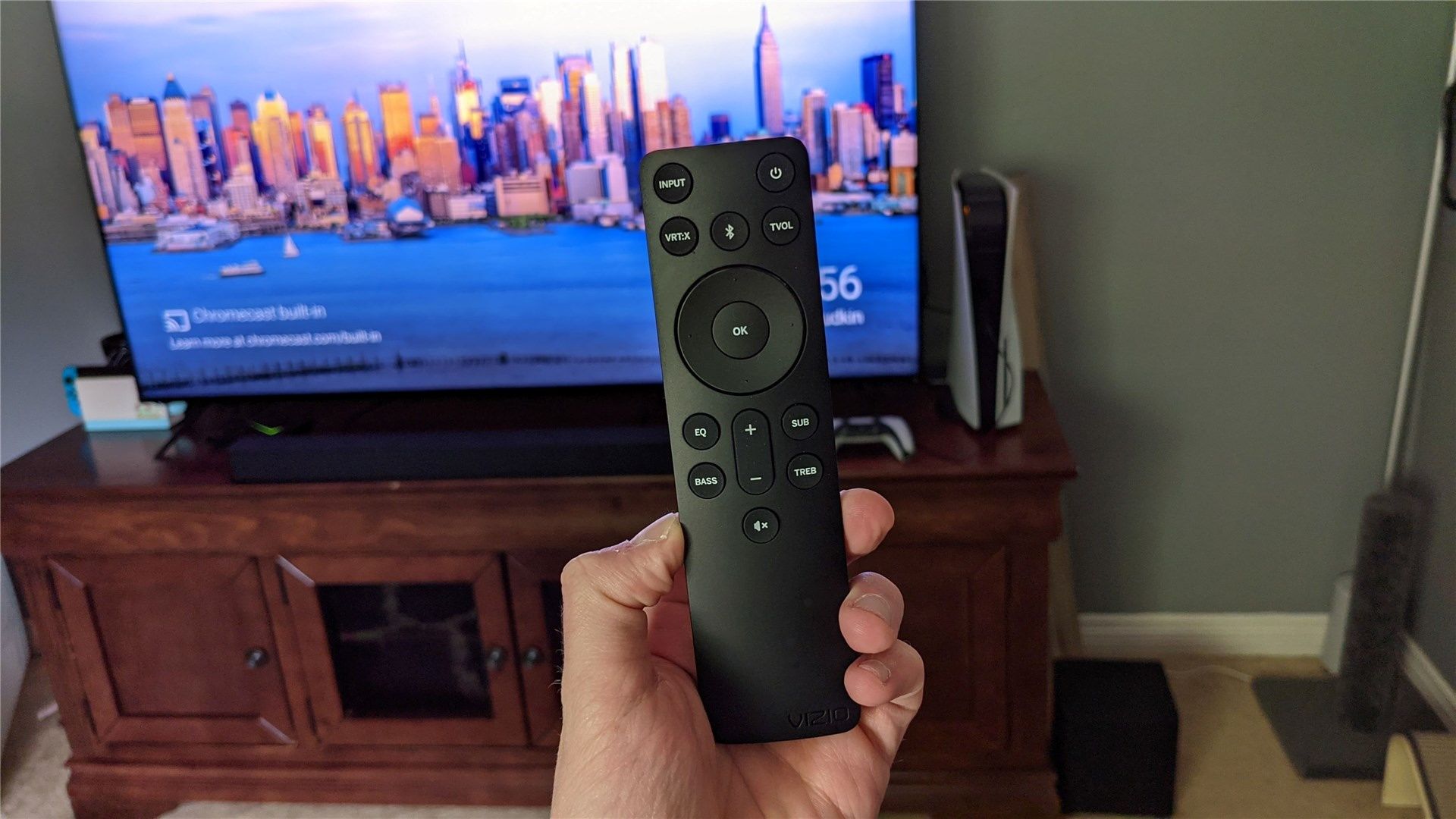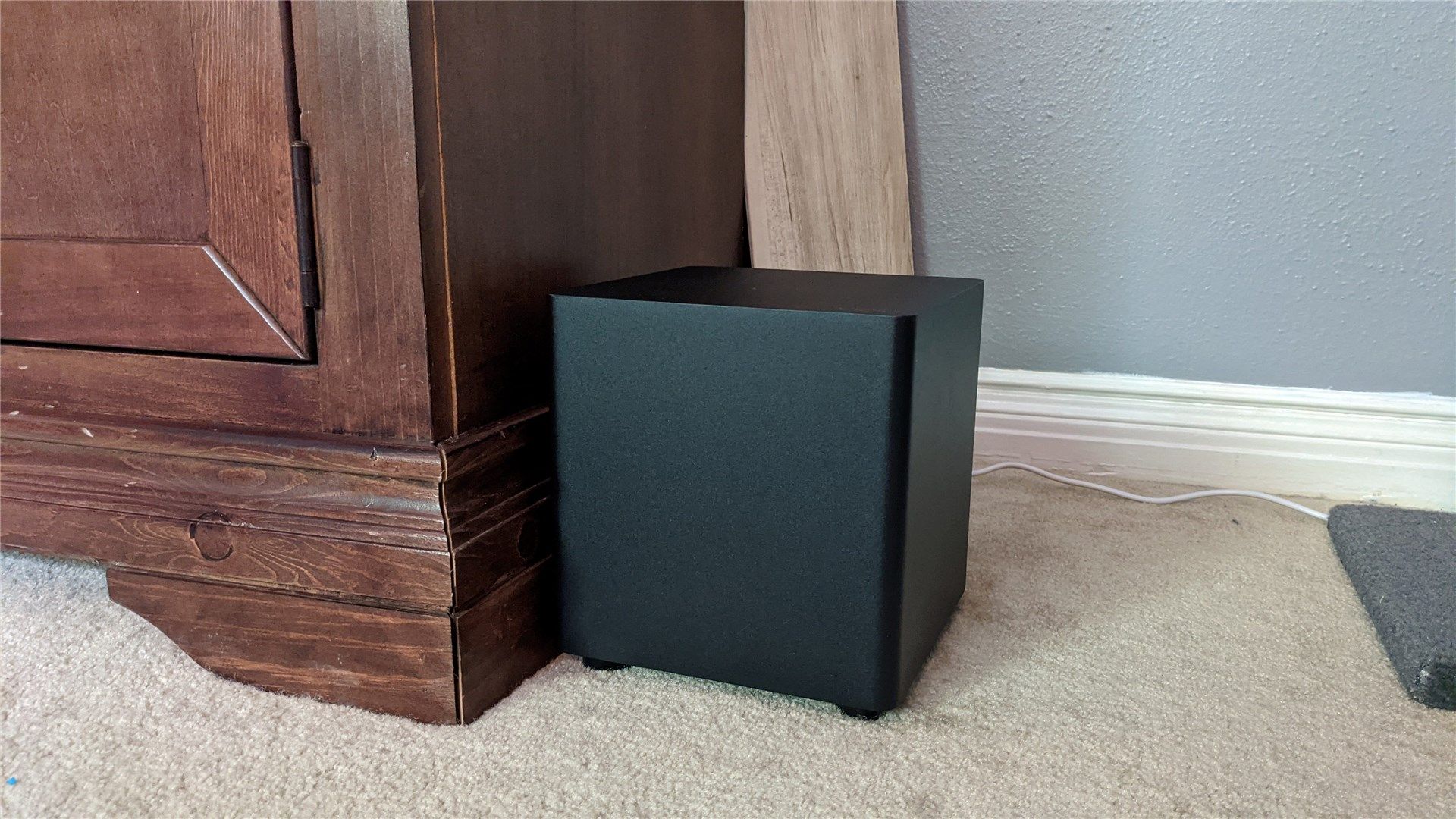Quick Links
My wife has been asking me for months to swap from our (admittedly old school) stereo receiver and big-ass speakers for a soundbar. I had no desire to switch---at least until I heard the newest Vizio V-Series 2.1 home theater soundbar (V21z-J8). For just $150, this thing is pretty unreal. It'll rattle the walls, y'all.
This is part of Vizio's newest lineup of soundbars, which was recently announced (alongside a bunch of TVs and other stuff). It replaces the outgoing V21-H8, which is nearly identical in spec to this one. The primary difference between the two is the subwoofer size---the newer model drops the sub from 5.25 inches to 4.5 without losing any of the frequency response.
If you're familiar at all with Vizio, then you probably know that V-Series is the company's entry-level line for most products, soundbars included. As such, I didn't expect much from this new soundbar when the review unit came in. I mean, how could a 36-inch soundbar with a 4.5-inch subwoofer compete with four large bookshelf speakers and a 10-inch sub?
When I hooked it up, it was clear to me how it could compete---by basically destroying the old setup that I've been using for years.
Table of Contents
- Features and Size: Small Footprint, Big Sound
- Sound Quality: A Lot of Boom for Your Buck
- Conclusion: An Excellent Upgrade for Minimal Moneydollars
Features and Size: Small Footprint, Big Sound
The V-Series 2.1 soundbar is fairly compact as far as soundbars go---the 36-inch footprint should pair nicely with most TV. The little-bity 4.5-inch wireless subwoofer has a very small footprint as well, so you can put it pretty much anywhere. This is a tight little system overall, which is what one expects from a soundbar, I suppose.
The soundbar has all the typical connections you'd want: 3.5mm analog, optical, Bluetooth, USB, and HDMI Arc (optical and HDMI cables are even included in the box). It also has a few built-in controls for power, volume, Bluetooth, and input. Pretty standard stuff here.
As indicated by the name, this is a 2.1 system, which means it has two front-firing speakers and one subwoofer. It does virtual surround sound, but you'd need to upgrade to the 5.1 setup for a "true" surround setup. We'll talk more about the virtual surround option in just a bit, though.
While it may be lacking a true surround option, it offers Dolby Audio, DTS Virtual Surround, and DTS Virtual:X. The latter option is the virtualized surround environment created with just two speakers and one subwoofer, and it's pretty impressive for a virtualized setup!
Without getting too into the weeds about Virtual:X, the long and short of it is this: it's designed to recreate a true surround soundscape without the need for rear, ceiling-mounted, or upward firing speakers. It uses spatial audio to convince your ears (or brain?) that sounds are coming from different areas around the room. This ultimately leads to a virtualized surround setup that can be used in almost any room, regardless of size or layout. It'll never be quite as convincing as a true surround step, but it does a lot with just a two-speaker soundbar and a single sub.
But virtual surround doesn't work great in all situations, like when listening to music. Fortunately, you can easily toggle Virtual:X with a single button on the included remote. The remote also has options for Bluetooth control, TV Volume, and EQ tweaks. It has pre-set EQ options for movies, music, games, and dialog and options to manually set bass, treble, and the subwoofer level.
This is actually the only real issue I found with this particular soundbar: when you set the bass too high, it rattles. And I'm not talking about the subwoofer causing vibrations---the actual soundbar rattles. This could be an issue with my particular unit, but with a sample size of one, I can't be sure. Just know that if you crank the bass up past about 80% or so, certain frequencies will cause the casing of the soundbar to rattle obnoxiously.
Each of the EQ options is optimized for a specific type of use. For example, Movie and Game modes enhance action scenes and surround details (though they handle this differently from one another), where the music mode enhances bass and focuses the range of the other speakers for music. I found each of these modes to work well for the intended use, to the point where it was worth grabbing the remote and switching to different modes depending on what I was doing.
Speaking of the remote, you can see it in all of its full remote control glory down below. While you can control the volume of the soundbar with your streaming box or TV remote (if you're using HDMI Arc, anyway), sometimes you do have to use the soundbar remote---like when you want to change the EQ or whatever.
The remote quality is fine. It uses a pair of AAA batteries, so you don't have to worry about charging it. If you have a Vizio TV, then you'll already be familiar here---nice, stiff buttons and a good feel. It's soft touch with rubber buttons, which offers a nice pairing, like a fine wine and cheese. I've never actually had wine and cheese, so I don't even know what that really means. But I hear it's good.
Take that however you want.
Sound Quality: A Lot of Boom for Your Buck
As I've already alluded to several times, the audio quality of this affordable soundbar is absolutely stellar. For $150, it is shocking how good it is. Everything is crisp, clear, and articulate, and the Virtual:X option does a convincing job of emulating a bigger surround setup.
But what most impressed me was the wall-rattling bass. My normal setup has a 10-inch subwoofer, so going to one that's less than half the size had me a little skeptical that it would be able to produce that boom I love so much when watching movies or playing games.
That concern was unjustified.
This little subwoofer can absolutely lay down some slap. In fact, it may even be more powerful than the older 10-incher I was using. At just over half volume, it produces enough low end to rattle the old-school rotary phone on the wall beside my TV. It vibrates the floor beneath my feet as I play The Last of Us. It hasn't disappointed at all.
When you juxtapose that with the crispness and clarity of the pair of speakers in the soundbar, it creates a truly impressive soundscape, especially when you suddenly remind yourself that this is a $150 soundbar. Not only that, but this thing can pump some volume. Vizio says it's capable of hitting 96dB, which is a bit louder than a regular lawnmower. In a small-ish room, that's a pretty high volume level (seriously, go fire your lawnmower up in your bedroom and tell me it's not loud.)
Now, don't get me wrong---you're going to get better all-around audio quality from something like the $330 Vizio M-Series 5.1 soundbar or the $500 M-Series 5.1.2 soundbar. Both include Dolby Atmos and DTS:X, while the latter also adds a pair of upward firing speakers. So you shouldn't expect $500 worth of soundbar for $150.
But you can expect a lot of soundbar for $150.
Conclusion: An Excellent Upgrade for Minimal Moneydollars
If you've been looking for a soundbar but don't want to spend a lot, this is one to add to your shortlist. Or maybe you already have a great soundbar in your living room and want something compact for your bedroom. Or the kids want a soundbar. This is also a great choice for those scenarios.
Ultimately, this is an excellent and impressive soundbar that punches far above its weight. It's an excellent value no matter which way you slice it.
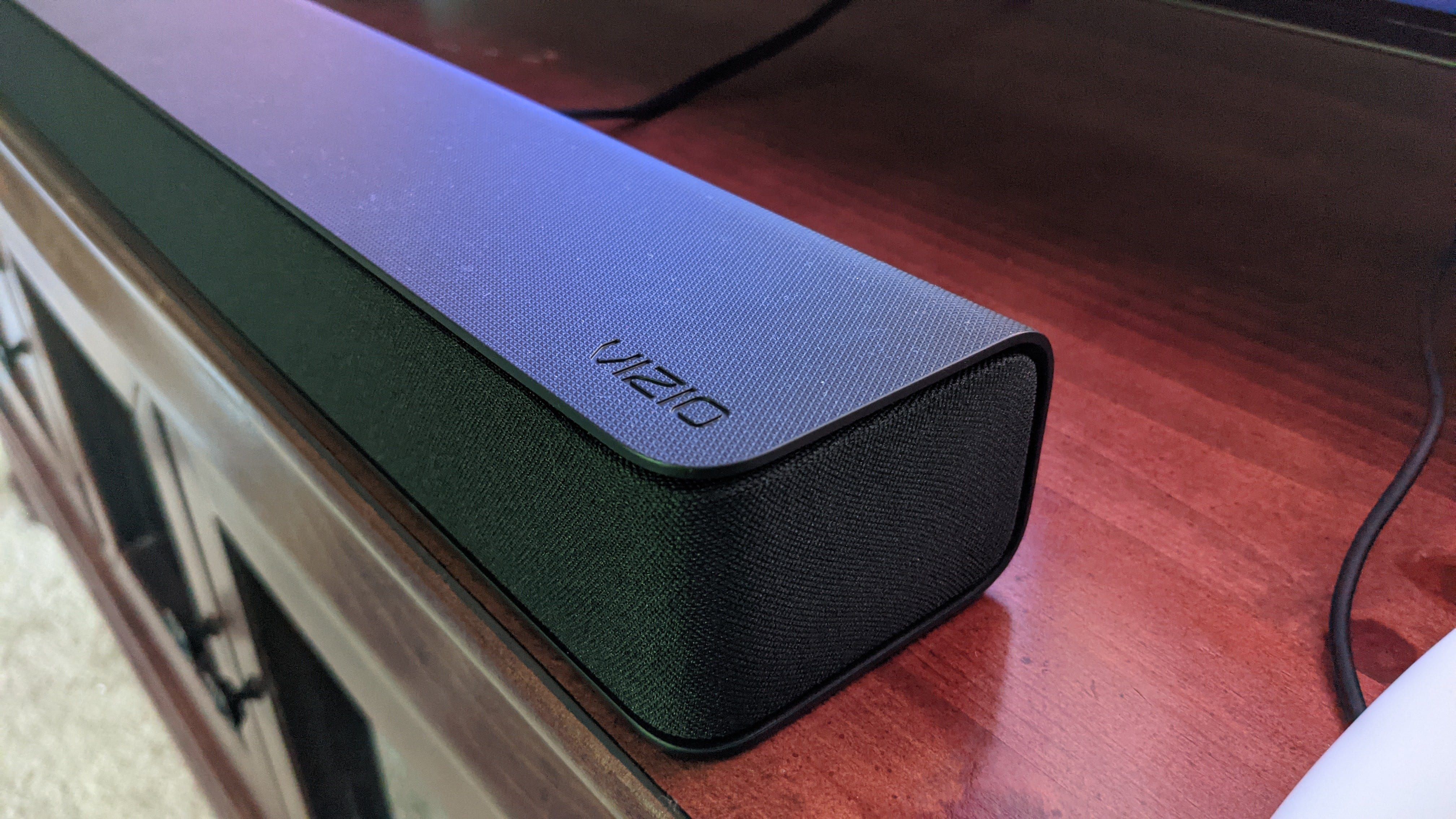
Vizio V-Series Soundbar (2021 model)
- Incredible value
- Massive bass from such a small sub
- Virtual surround is pretty convincing
- The soundbar rattles with the bass turned up

